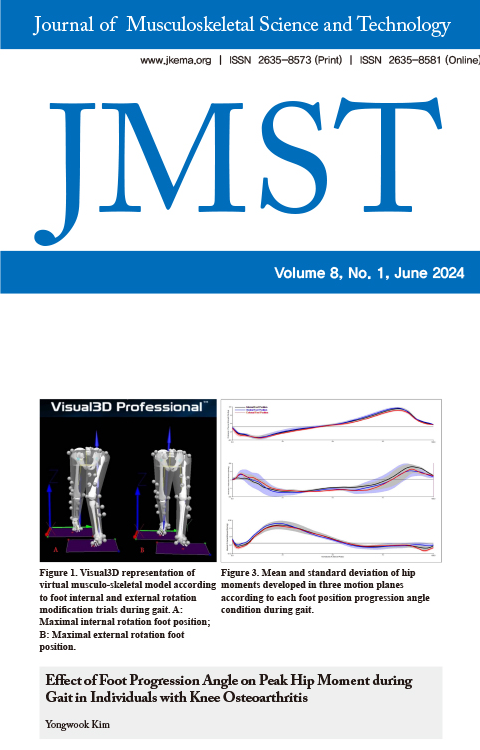Comparison of Lower Extremity Range of Motion according to Sidekick Quality in Taekwondo Poomsae Athletes
- KEMA학회
- Journal of Musculoskeletal Science and Technology
- 제8권 제1호
-
2024.0642 - 48 (7 pages)
-
DOI : 10.29273/jmst.2024.8.1.42
- 5

Background Sidekicks are the most skill-demanding, and Taekwondo Poomsae athletes make mistakes while performing sidekicks. It is common for the quality of a sidekick to determine the outcome of a match. Purpose This study aimed to compare lower extremity range of motion, sidekick angle, and pelvic tilt angle according to sidekick quality in Taekwondo Poomsae athletes. Study design Cross-sectional study Methods Twenty-one Taekwondo Poomsae athletes were recruited and divided into a high-quality performance group (n=12) and a low-quality performance group (n=9) by the Korean national team athletes. The lower extremity range of motion, sidekick angle, and pelvic tilt angle during the top-side kick were measured. Independent t-tests were used to compare the lower extremity of motion, sidekick angle, and pelvic tilt angle between the high- and low-quality performance groups. Results Lower extremity range of motion, knee extension of the kicking leg, hip flexion and knee extension of the supporting leg, sidekick angle, and pelvic tilt angle were significantly different between the high- and low-quality performance groups (p<0.05). Conclusions Flexibility training for knee extension of the kicking leg, hip flexion and knee extension of the supporting leg, and pelvic tilt should be considered to improve sidekick quality in Taekwondo Poomsae athletes.
INTRODUCTION
METHODS
RESULTS
DISCUSSION
CONCLUSIONS
REFERENCES
(0)
(0)